Advertisement
With my last couple of articles, I’ve taken the discussion away from price and volume, as I wanted to focus on the underlying bitcoin infrastructure and governance model, as well as on the technology developments that will push adoption. I believe it was worth it, as we really need to understand how this new distributed infrastructure and organizational models can be applied to most businesses today. More however, if we do not make an effort to learn the subtle difference between decentralizing infrastructure vs decentralizing governance, all this cryptocurrency madness might end up blowing all over our faces.
After all, what’s the point of having a decentralized infrastructure if power remains with the few and not the many?
It’s up to all of us to pressure governments, regulators, news media, and crypto-influencers to promote better outcomes for a decentralized world, by simply not blocking people from accessing this wonderful medium of storing value or by spreading FUD amongst the crypto-community. Aren’t we all on the same boat, after all?
–this article shouldn’t be taken as financial advisement as it represents my personal opinion and views. I have savings invested in cryptocurrency so take whatever I write with a grain of salt. Do not invest what you cannot afford to lose and always read as much as possible about a project before investing. Never forget: with great power, comes great responsibility. Being your own bank means you’re always responsible for your own money—
The Latest Bitcoin Price-Action
The current price of Bitcoin is sitting at a comfortable USD 6300 level, meaning although we saw a huge sell off, most likely due to pure market manipulation, Bitcoin’s price is still above the USD 6000 support level and below the USD 8400 resistance. The trigger to the sell off that took place during the beginning of September was probably related to a wallet which remained inactive for 4 years and then decided to dump some btc, according to some sources. Not before, of course, a huge short against bitcoin appearing on our good ol’ friend Bitfinex. This leads me to believe the flash-crash was due to a single player/entity selling about 100k Bitcoin to make a quick buck.
If you look at the 1 year evolution of Bitcoin’s price, from September 2017 to 2018, what we notice is that it grew 1.5x. Now, does history predict future prices? Clearly not; but it can tell us a really interesting story. For one, will this bear market have a long-term influence on the price of bitcoin? Is the cryptocurrency market capable of recovering?
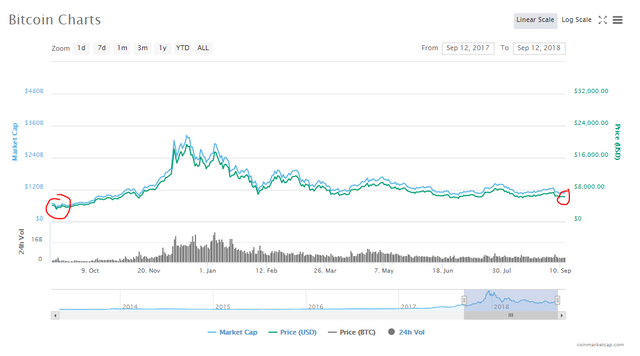
If you remember the words of expert traders and investors you should always:
- buy when there’s fear,
- sell when there’s hype;
I see the past 6 months as an amazing opportunity to snatch some bitcoin (or any other cryptocurrency for that matter), at a really nice price. Would you sell-off your investment at a loss if you knew it could be 1.5x times higher next year?
Bitcoin Price Volatility
The reason why so many people invest in bitcoin is due to its volatility. Without it, there would be a lower chance for epic gains. Whoever is patient during extensive bear markets, will eventually take home a butt load of profits. This is what price history tells us: what eventually comes up must come down; yet, the opposite also happens.
Looking at the table above we can see many great opportunities to enter the market. I really don’t know that many assets that can crash more than 80% and then, not only recover, but grow 10x; just 3 years later. It’s insane how speculative the bitcoin market is, however it is that same speculative nature that brings more people in.
You might still be worried though, how can anyone be sure what the future holds? What if this is the only time ever the market won’t recover?
What if I lost all my money?
My advice is to stop going in circles. Literally.
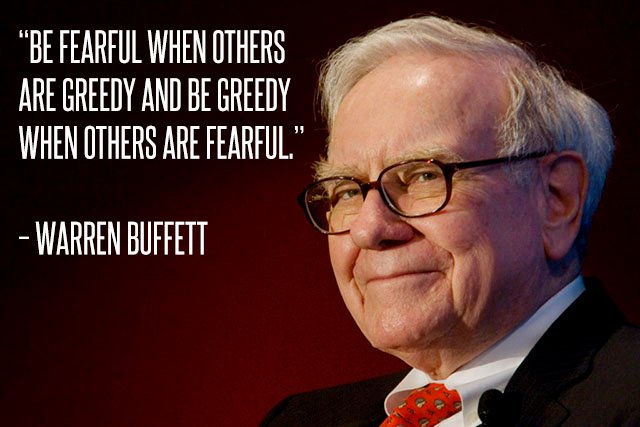
Warren Buffett, chairman of Berkshire Hathaway Inc., speaks during an event marking Business Wire’s expansion into Canada in Toronto, Ontario, Canada, on Wednesday, Feb. 6, 2008. Buffett said a credit crunch isn’t underway and he forecast that the dollar’s value is likely to decline. Photographer: Norm Betts/Bloomberg News
The point is: ride the waves, don’t fight them.
Unless you have the money to move mountains (on this specific case the mountain being the price), it’s futile to worry too much what about you can do. The way I see it, this is a very simple binary game. You either win or lose by selling or buying. The options are quite simple and the end result depends on a good strategy, hard work, timing and patience.
Let’s get down to business and discuss my view on how to tackle bear markets.
Find a reliable strategy
There are plenty to chose from but your goal is to chose one and stick to it. It’s easier said than done, especially if you like to glue your face to candle charts on a daily basis, however, do not deviate from a path before you’re sure there is an abyss.
Any strategy depends on its players. Think if you’re into researching projects, teams, businesses and make long-term bets, or care more about price-action and short-term trading. Or both. I really can’t say, it depends greatly on your personal interests.
Strategies take time to show results, like everything worth in life. Most successful traders understand this as a golden rule, as well as, no strategy can overcome all obstacles. That’s just the way it is.
Some bottlenecks cannot be avoided and you will make bad choices.
pro-tip: enjoy falling. It’s part of the learning experience.
After all, we’re just human. Even bots make mistakes – as they are crafted by us and code isn’t free of bugs.
Learning from those experiences is what can make you a better trader or investor. For example, if you had bought cryptocurrency on the 6 months prior to January 2018, you could be making a hefty profit by converting your cryptocurrency into fiat.
Anyone with a bit of sense in their heads would at least convert enough to cover for the initial investment. That way, even if the price went to zero, you would have your butts covered.
What if you’re stuck at a potential loss because you came in too late?
My strategy is simple: buy when prices are low, sell when prices are high, hence there are always two options:
(a) sell the assets at a much lower profit or at a loss and reinvest at a later stage,
(b) keep the assets, maybe buy more to average losses and wait for another bull-run.
Whatever decision you think is the right one, it is the right one.
The likelihood we look at money, risks and rewards the same way is quite thin, meaning: there are no right or wrong answers.
What matters to me is the ultimate goal: to make money; and the best way to do achieve that is to stick to a strategy and keep going at it – with a certain degree of critical thinking, as you don’t want to keep losing money in the long-term.
However, in order to achieve mastery of any kind, one needs to work hard at it.
Put in the hours

Time is a funny thing. Until a couple of years ago we thought time was a constant, this is, it was felt exactly the same way no matter where you were in the universe.
Of course we now know, thanks to Einstein’s theory of general relativity, time is actually relative. This is, the faster you go, the slower time will pass (relatively). If you hopped onto a shuttle and went to another galaxy at near the speed of light, it meant you would experience time differently from someone down in Earth.
Why is time important? Well, because I believe knowledge to be connected to your perception of time. It’s much easier to make good decisions when you have sufficient know-how and understanding to expand your event horizon; in this very specific case, the event horizon being the limit of our own knowledge.
What I mean is the more knowledge one possesses, the easier it is to see past certain barriers. It can be news, experts’ opinions, price movements or anything that could be a potential trigger for bad decisions.
To gain knowledge, however, there are no clever ways to circumvent the harsh reality of things.
You need to dig-deep and find ways to learn as much as possible, about each and every field that dictates the price of cryptocurrency.
Some I tend to follow are down below. They’re purely based on my opinion and preferences, nothing else.
- Technology: it dictates user adoption. Understanding how bitcoin and other cryptocurrencies work under the hood is crucial. You can have the most amazing tech, but without proper UX/UI and nicely thought incentives and rewards, user adoption won’t likely grow as expected.
- Psychology: it dictates market behaviour. If you want a neat tool to understand when it’s a perfect time to sell, check google trends. People lookup bitcoin the most when prices are at its highest. I would argue it’s within our nature to buy when prices are high due to excessive FOMO and hype. That’s why it is so important to be a contrarian when it comes to making decisions.
- Traditional Markets: they dictate investors’ strategy. Consider the following: if the shares-asset class is doing fine, how do you think the price of long-term assets, like gold or silver, will behave? Interest rates near zero-levels make investors bullish on spending money on assets with huge returns, as making riskier gambles is cheaper. Don’t people say bitcoin is the new digital gold? What do you think it will happen when traditional markets enter a bearish cycle? In my eyes, cryptocurrency could be the answer.
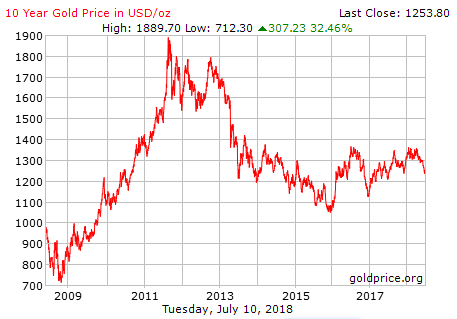
4. Reality: it dictates market values. If you didn’t know, most technological problems are also philosophical ones; if you think of scalability, the hottest subject around cryptocurrency adoption, it becomes obvious the discussion is not whether you can scale bitcoin (or other cryptocurrencies), but how you’ll do it. Will we give up decentralization for efficiency? If so, where would that lead price-action? What matters at the end: core values or the reality of things?
These are my four pillars of investing. Remember, critical thinking is key to becoming aware of how knowledge can be applied in different situations. To become a winner you certainly don’t need all the know-how in the world; there are plenty of examples that show success is not due solely to our big brains. You can’t master investing without mastering a bunch of other fields first. That’s why so many successful people who don’t possess formal education have made it.
Learn as much as possible, fail as soon as you can and repeat the cycle. There are no exceptions.
Work hard and always share knowledge with others. Remember, networks only grow if its community grows too.
Time spent on the market
There’s a really nice article explaining why timing is so critical, but the gist of it is that if you miss, for example, the best 10 days of trading (during peaks/lows), you could potentially lose more than 50% of all potential profits. This is, missing the 10 best days can lower your expected returns in halve.
Instead of worrying, take these bearish cycles as a lesson and study some techniques to assist you in making more accurate predictions in the future.
Nobody can time the market perfectly, but there are a few tricks to minimize your risk.
TA is definitely a great tool to better understanding price movements and how you can leverage them for your own gains.
I’m definitely not an expert when it comes to TA, so I would advise you to follow some people who do trading for a living. Two of my favorite are Daniel Jeffries and Alessio Rastani. They have completely different approaches, but that is what you should be looking for: people with different ideas, visions and ways of investing/trading.
Pro-tip: You can learn a great deal by researching on the old masters of trading and their long-term techniques.
The underlying logic always remains the same:
- Buy low / Sell high,
- Be a contrarian, but respect trends.
Now, accomplishing this feature isn’t easy; to make it simpler, I will share my knowledge and way of thinking, what I personally care about and the correct time-frame for investing.
If it works for you, build upon it. Knowledge clearly has network gains, as the more you share, the more people can build upon your findings, making the entire network better.
Be patient. Rome wasn’t built in a day.

How many stories have you read or heard of people complaining they either lost everything or sold too soon?
That’s how hard it is. Especially when you can now easily trade with leverage.
Don’t forget, it’s you vs the market.
Always.
At the end of the day what matters is if the call you made translated into profits. If you’re looking for lambos and moons, I’m sure the likelihood of losing your investment is quite high. This is, usually people who expect quick gains do not have a key ingredient for success: patience. That’s why bearish cycles are so important, as they clean the market of both disbelievers and bad projects.
If you really want to succeed in this market, you need to go all-in. No, do not put all your hard-earned cash into bitcoin, but do dive-deep into cryptocurrency by learning about its technology, business ventures, market behavior, TA, or any other field you might consider relevant. You’ll be adding value to the market not only because you’ll be making more informed decisions, but you can also share knowledge with others.
Markets are cyclical. If you lost money now you can always recover it on the next bull-run, which in my not-expert opinion, might be coming soon.
One of the obvious reasons are ETFs. If, in one hand, bitcoin futures gave institutional investors a chance to bet heavily against bitcoin and make double-wins, ETFs will have the exact opposite effect.
Another, as they say, is history. It surely does not repeat itself; nonetheless, it gift us with price-action certainty. Like October and November being kind months for Bitcoin’s price.
Set reasonable targets in your head and don’t get too greedy. Be patient and learn as many different strategies as possible.
At the end, any market is just a game of winners and losers.
Want to be on the winning side?
Sell high, buy low.
Don’t forget, nothing is certain; chaos is everywhere and the arrow of time always moves in the same direction. All you read are my personal opinions which are not financial advisement. Be responsible.
Featured image from SHutterstock.
Follow us on Telegram or subscribe to our newsletter here.• Join CCN's crypto community for $9.99 per month, click here.
• Want exclusive analysis and crypto insights from Hacked.com? Click here.
• Open Positions at CCN: Full Time and Part Time Journalists Wanted.
Read original article
Posted from our news room : https://news.sye.host/bitcoin-opinion-the-lessons-of-a-bearish-market/

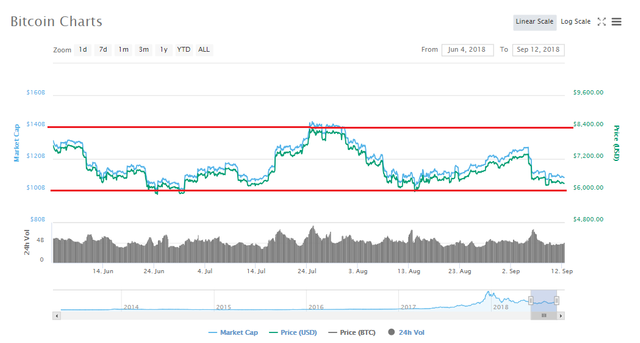
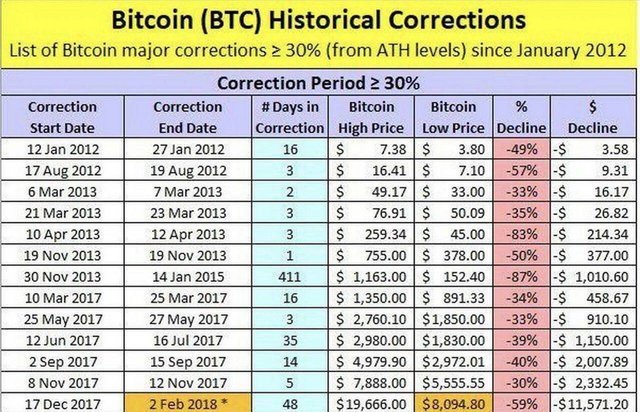
Warning! This user is on my black list, likely as a known plagiarist, spammer or ID thief. Please be cautious with this post!
If you believe this is an error, please chat with us in the #cheetah-appeals channel in our discord.
Downvoting a post can decrease pending rewards and make it less visible. Common reasons:
Submit
This user is on the @buildawhale blacklist for one or more of the following reasons:
Downvoting a post can decrease pending rewards and make it less visible. Common reasons:
Submit